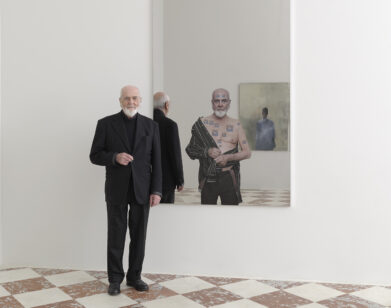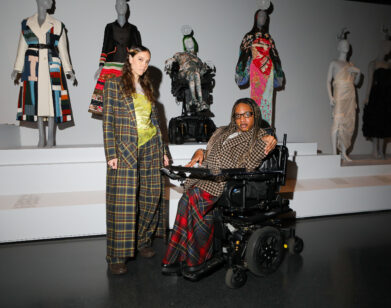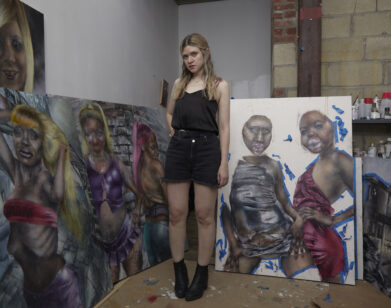Jade Kuriki Olivo, aka Puppies Puppies, is Embracing Her Identity as a Latinx Trans Woman
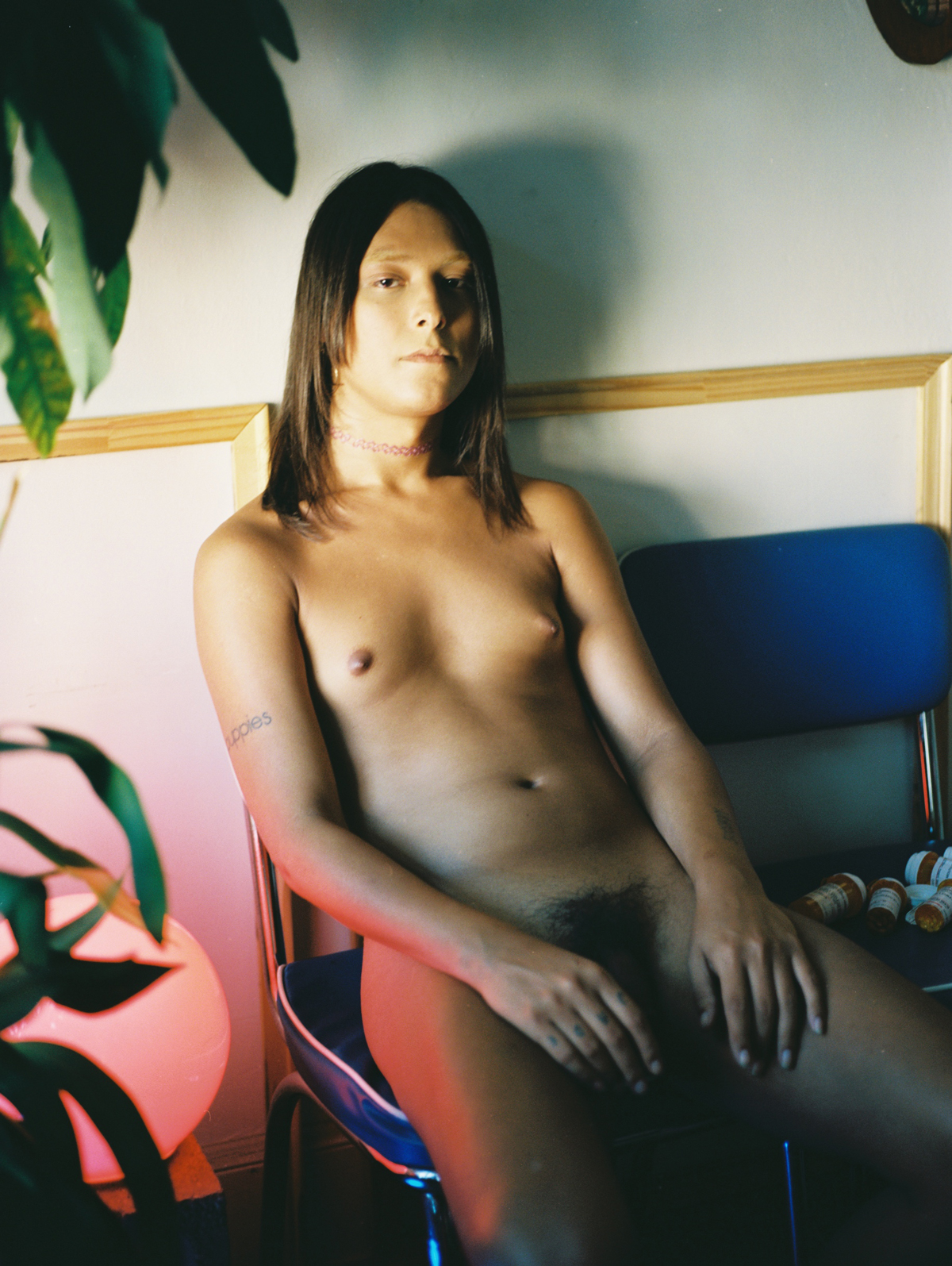
The artist Puppies Puppies made their gallery debut in 2015 and quickly became a sensation, almost as much for the secrecy of the person behind the art-world alias—with no birthdate or fixed nationality provided—as for their startling, provocative, pop-culture–rich, ready-made assemblages and performances. Those works were full of heart, heat, queer pride, and a willingness to cross uncomfortable lines. Puppies Puppies has inhabited the costumes of SpongeBob SquarePants, the Statue of Liberty, and Freddy Krueger; made a maze out of airport immigration barriers to evoke the horrors of LGBTQ deportation; affixed hand sanitizers to a wall as an installation; and recreated the shower (complete with a male performer) of a famous Parisian strip club. But as their projects evolved, the individual behind the work did, too. Earlier this year, at a gallery in Detriot, the artist exhibited what amounted to a graveyard and chiseled tombstone for her former self (Andrew D. Olivo 6.7.1989–6.7.2018). Now Jade Kuriki Olivo continues to create radical, transformative work as Puppies Puppies, no longer disguised or unnamed. Writer Laura Albert called her up this past October at her home in Los Angeles.
———
LAURA ALBERT: I was thinking before we talked about how, in my own work, I create a world that people can choose to enter and accept. I guess I feel like you do the same thing, that our work is similar in that way.
JADE KURIKI OLIVO: When I watched your documentary [Author: The JT LeRoy Story], I was like, “Wow, I take after this person.”
ALBERT: You don’t take after me—we’re the same fucking make and model! I think maybe we have a sincerity that can be hard for others to take. When other people do come in, they often have to be arch or wry or cynical because they don’t want to be tricked or had. They can’t have an open heart because they worry they might be manipulated. But we make work that reveals how we feel in a given moment—our art creates that moment.
OLIVO: I think of art as this beautiful realm where anything can happen. That might sound like a simple idea, but I really think it can encompass absolutely anything. For example, I once claimed an aquarium as an artwork and I just told people to go visit it. The aquarium was on an island in Detroit and it felt like being in another world. It was really gorgeous, covered in old green tile. Half the tanks didn’t have fish in them. Something about it resonated with me.
ALBERT: I’m always having to make sense of things through metaphors. My son just turned 21 and I was telling him something yesterday by saying, “It’s like….” And he said, “No, Mom, I understand. I don’t need a metaphor.” I was about to have a breakdown because if I couldn’t give him the metaphor, smoke was going to come out of my ears. [Laughs] But I think it’s particularly true for those of us who go through physical or emotional trauma. It’s dangerous if you don’t find outlets to express that trauma. As an artist, you’re giving people an invitation to see that trauma and also be healed by it.
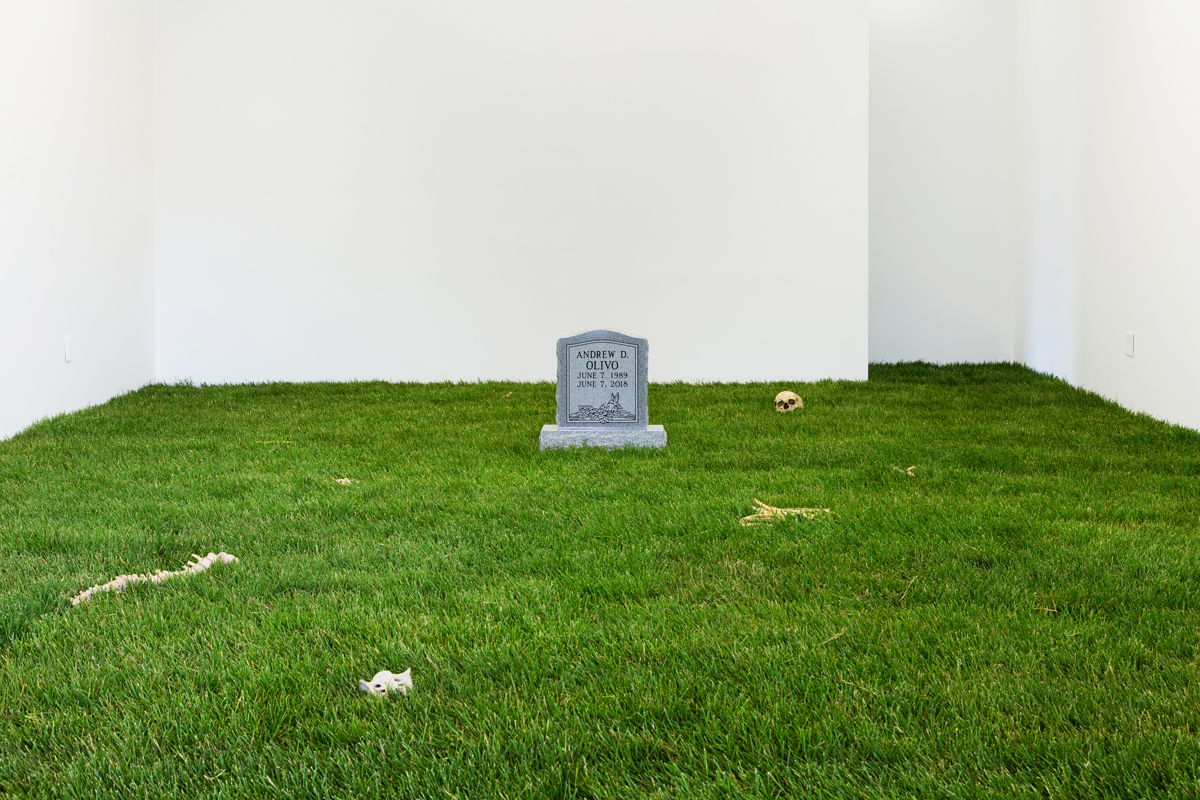
“Andrew D. Olivo,” 2018.
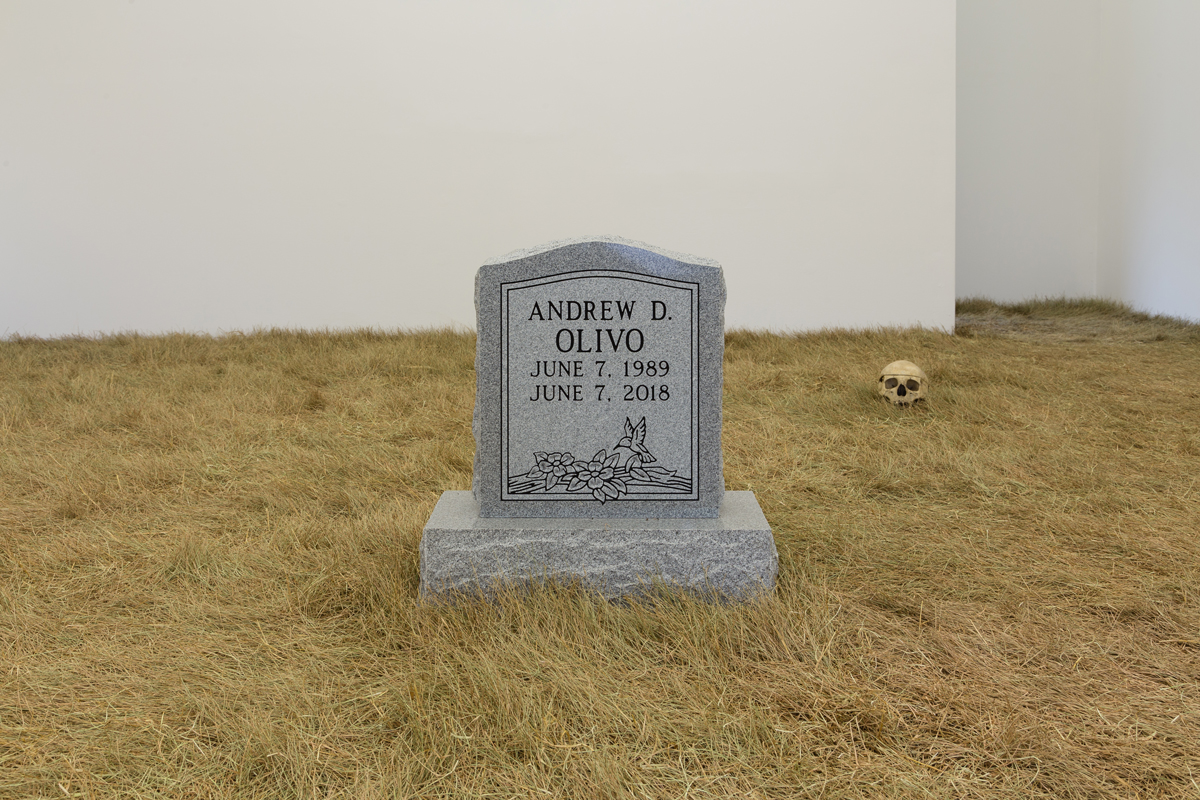
“Andrew D. Olivo,” 2018.
OLIVO: Sometimes I feel like we are just collections of everything that has ever happened to us, and everything that we have ever experienced and everything we’ve ever heard about and everything that we’ve seen in image or video or even caught a mini-glimpse of.
ALBERT: So many people live in the illusion of their own isolation. And yet, there’s a connectivity that goes on, not unlike the way bees or ants communicate. Many artists, in my experience, have a great understanding of what they’re doing and even still there’s a mystery to their work—something subconscious that they channel. Your work is like that. You let people come in with their cynicism or fear—especially once you introduce gender, because that’s the one thing people go ballistic over. They stop being able to even see the other issues because it becomes an obsession of, “What did you do to your chest and what’s between your legs?”
OLIVO: This is such a good point to bring up. I’m not sure I should be saying this, but I’m naked while we’re talking. We’re on the phone, so it’s fine. I don’t know if I would be naked if we were Skype-ing or FaceTime-ing.
ALBERT: So I’m going to ask you, using my old phone-sex voice, “Jade, describe your body to me.”
OLIVO: Well, I have masculine-seeming hands. They’re not big, but they seem a little off. My boobs are the size of my hands in that I can grab them fully, which I’m really proud of because I used to not be able to grab anything because nothing was there.
ALBERT: Have you started hormones?
OLIVO: Yeah, about 11 months ago. Your balls shrink a lot.
ALBERT: Do you have a vagina?
OLIVO: No, it’s a clit. It kind of looks like a penis, but it’s a clitoris.
ALBERT: When you talk to most artists, their bodies don’t usually come up. I met Rupert Everett last night when he was presenting this beautiful movie he did on the life of Oscar Wilde [The Happy Prince]. He talked about being gay, but I didn’t ask him about his body. But when you enter the realm of gender, it’s something that often comes up right away. How much does your gender transition inform your work?
OLIVO: The work follows my actual life. Everything that’s happening to me at any given moment goes into the pieces. Right now, I’m transitioning hardcore because I’m about ten months in—my hormones are all being replaced. I’m on a lot of whatever, so right now my moods are all over the place. A lot of the new work does deal with transitioning. But a lot of the older work was also about me trying to express being trans—just more subconsciously through different objects and situations. Sometimes in ways I didn’t even realize at the time, which I think happens a lot.
ALBERT: Oh yeah, all the time.
OLIVO: But there were a lot of other things, too. I had a brain tumor in 2010, so a lot of stuff was about that.
ALBERT: How did you discover it?
OLIVO: I got in a bike accident. I was on this shitty bike and a car hit me. I got a CT scan because I hit my head on the road. I went home all bandaged up, and then the next day I got a call that I had this flesh-eating parasite in my brain—
ALBERT: Wait, what?
OLIVO: They’d misdiagnosed me. It was insane. I was in shock at the hospital so I didn’t really speak, but they assumed that because I’m Latinx I didn’t speak English. The diagnosis was that I had caught something that was commonly contracted in South America, because they’d just assumed that’s where I’m from.
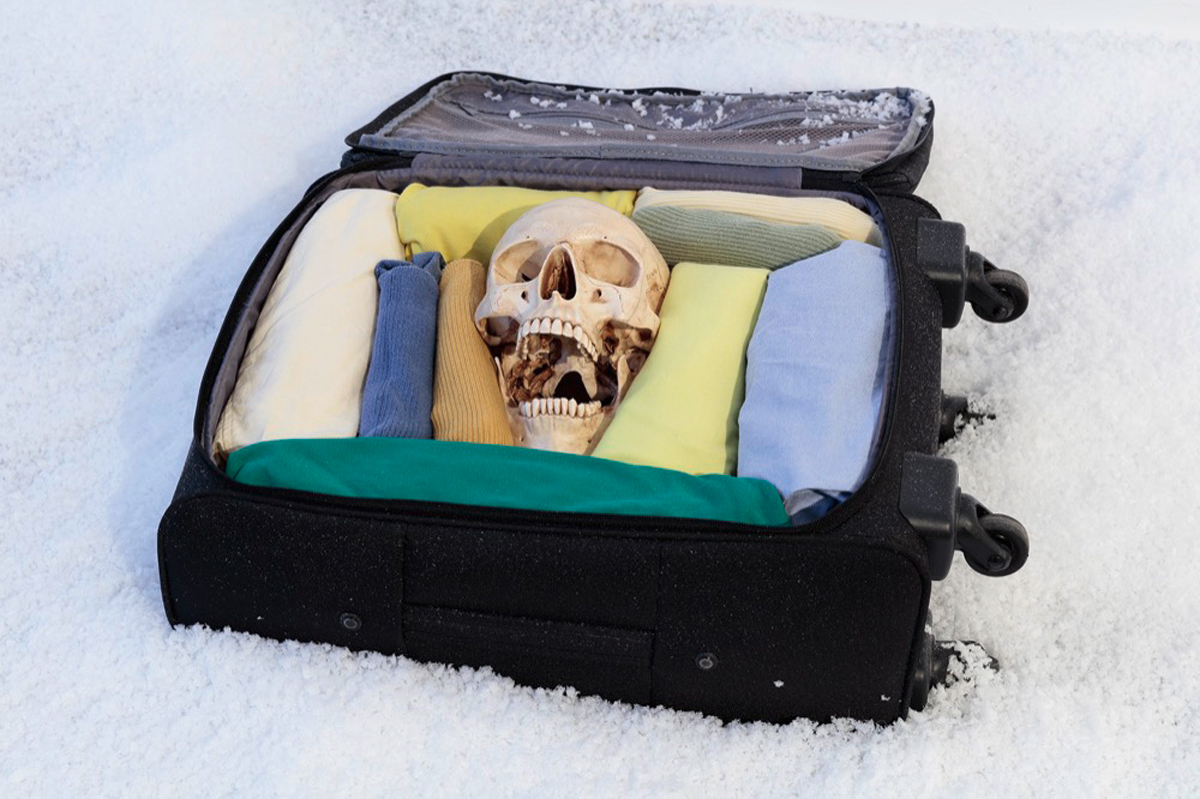
“Baggage (Carry On),” 2015.
ALBERT: Oh, my god, that’s insane.
OLIVO: For a few days I thought I had this thing that was eating shit up there. In the end, I had a brain tumor.
ALBERT: They’ve done all these neurological studies about how brain tumors can cause personality changes. Did you notice any changes before and after surgery?
OLIVO: I was really foggy for a while after surgery, which is normal, but then I’ve kind of always had bad short-term memory. I smoke a lot of weed, and that’s bad for short-term memory. I did have more of a Spanish-speaking ability before the brain tumor and that was definitely gone. But the good thing about it is that I had a new outlook on life. I think that helped me come out as trans. When you have a brush with death, you’re very grateful in some ways. Or you just want to die again. Or die more. But those moments are really important. Most people think of art as objects, but I really think of it as moments.
ALBERT: If people can give themselves over to those moments with a childlike, open heart, and be with the materials presented, then they can get at the truth.
OLIVO: I like that childlike dimension you’re talking about. I feel like we’re all little sponges as children and we just absorb everything around us. With my art I sometimes try to go back to that way of open-ended thinking, before we got tainted by all of the bullshit.
ALBERT: Where did you grow up?
OLIVO: I grew up outside of Dallas, Texas. It was bad. My mom is Japanese and my dad is Puerto Rican so we really didn’t fit into the whole culture. We were all just really scared all of the time.
ALBERT: Bad shit happens to us when we’re little. Sometimes I wonder, “Why are we artists and not killers?”
OLIVO: That’s a good question!
ALBERT: I wanted to ask you about my description of the gender variance of JT LeRoy in my novel Sarah. That was, of course, before we even had that term—gender variance. Did you get that I was dealing with issues of gender?
OLIVO: Yes! Totally. Did you see it as a form of drag?
ALBERT: It was a form of that. Last night, when I got dressed to go to that event, I felt like I was putting on my “female outfit,” which for me is drag. Some people dress up in this stuff every day, but for me it’s a little stressful.
OLIVO: Every moment I think about going out into the world is stressful.
ALBERT: Is it easier now that you have transitioned?
OLIVO: No. It’s harder. It was easier just pretending to be a dude. Now I’m perceived as a dude in a dress. We think that we’re in 2018, but we are not. We are in the Middle Ages, my friend. There are people who see us as beautiful and amazing—I don’t mean to say that the reaction is always negative. I can go into some circles and be like, “Oh, I’m a model. I’m so beautiful. People love me. This is how it was always supposed to be.” But I can go into others circle where people are like, “Ugh!” And I’m like, “Oh, god, they want to hurt me.” Or, “They think I’m a pervert!”
ALBERT: Last night I was with my friend Nicole, and after we saw that Oscar Wilde movie at a theater in the heart of the Castro District, we got picked up in a Lyft and the driver wouldn’t stop calling Nicole “him.” I kept saying, “You need to stop that right now!” Nicole was trying to calm me down and I was like, “No. You need to fucking stop that. You realize we’re in San Francisco. She is a she. If you can’t do that, then we’re gonna fucking have an issue.”
OLIVO: There are transphobic people everywhere. Even I’ve been transphobic toward myself.
ALBERT: We internalize. I was born in 1965. The closest we got to transgender representation was in The Rocky Horror Picture Show, which was mortifying. The whole thing was considered sick, and it’s impossible not to absorb that attitude. It’s still like that. I notice it when I walk around in San Francisco, where there are a lot of frat kids. They look spooked when they see me and Nicole, like they’re pathologizing us. It’s almost like, “Okay, we’ll accept you as a trans-being if we wanna fuck you.” You have to feed people, entertain them, or be fuckable or marketable in some way. If you’re not, what good are you? Then you’re just frightening. Let’s talk about your art. I’ve loved some of your recent shows. There was one where you used human bones to make a graveyard [Andrew D. Olivo 6.7.1989–6.7.2018 at What Pipeline in Detroit].
OLIVO: Ever since I was a kid, I’ve wanted a real human skeleton. I found one in a vintage store in Texas. That’s how weird Texas is. I wanted to buy it, but the guy didn’t want to sell it. I finally ended up getting one that had been used to study anatomy in Paris, and I put it in this work. I’ve actually used human bones three different times. I also used a brain with pills on it: the pills that I take—estrogen, progesterone—and a weed leaf because I smoke a lot of weed. It was a calf brain but it looks like a human brain. Just to note, no calves were harmed in making that piece.
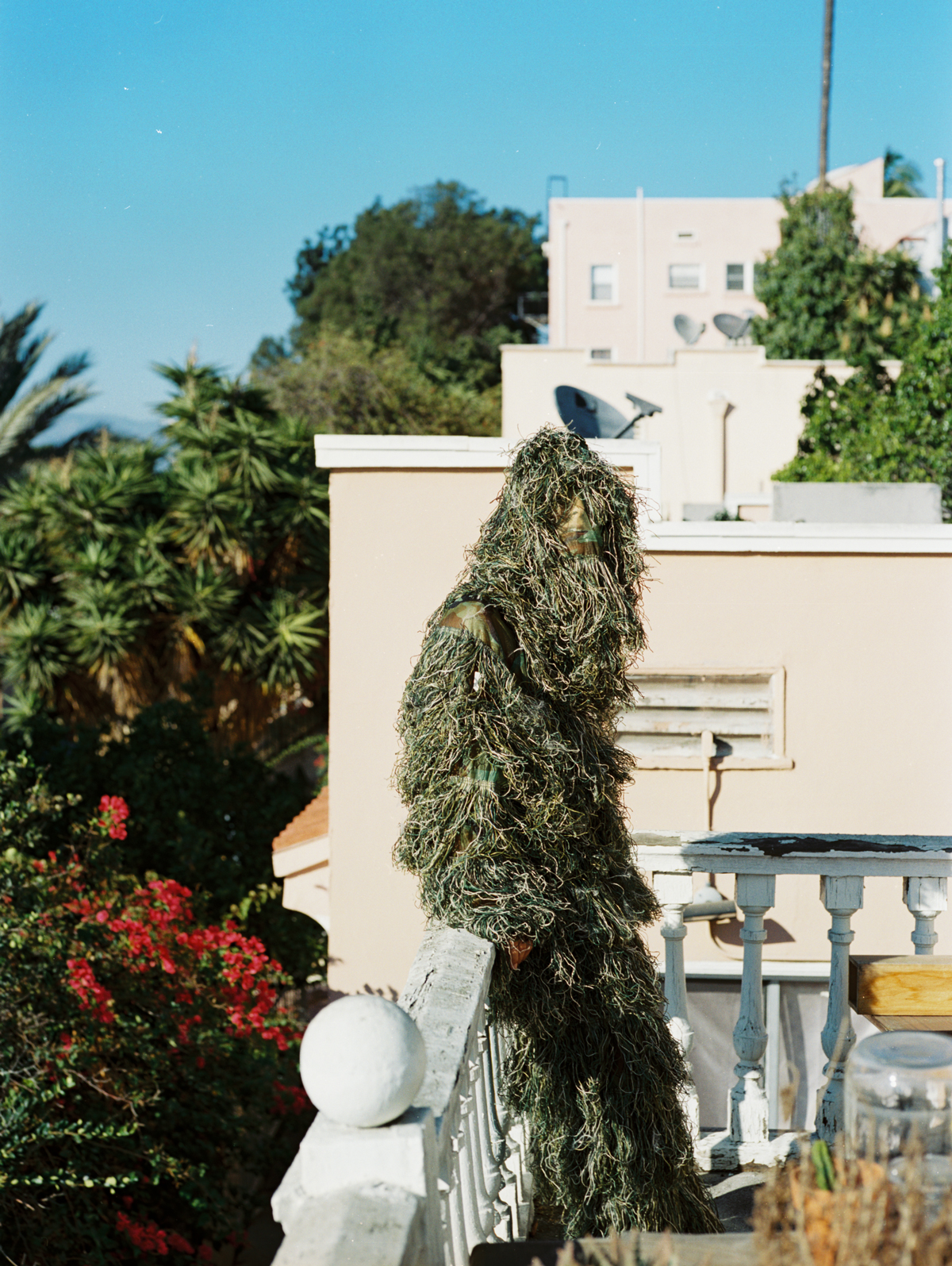
ALBERT: How long was that show up for?
OLIVO: It was up for a month. I wanted to open it on my birthday but couldn’t get it together in time. I had a tombstone engraved with the day that the show opened. It had my birthday on it, which was big because I have never revealed my birthday or my dead name.
ALBERT: What are you working on next?
OLIVO: I have a show in early 2019 at a gallery in Switzerland called Francesca Pia. I’m going to collaborate with the artist Eliza Douglas.
ALBERT: How do you start a collaboration?
OLIVO: That’s a good question. We talk and pick up what rings true for both of us and we keep going with it. We just see where it goes. It could be anything, from McDonald’s to zombies. We’re okay with being all over the place. It’s freeing to collaborate. As an artist you want to be able to sometimes have fun and let go because you’re often more restrained when you work by yourself.
ALBERT: Do you find funding as an artist a challenge?
OLIVO: I sell enough to survive. But not everything I make is sellable, or even for sale. For example, this one piece I did involves urine in a bottle where the person exhibiting the work drinks a bottle of tea—three or more times—and has to transfer all of the resulting urine from the tea back into the bottle. The person’s name is incorporated into the title of the work since they produced it. Obviously the more conceptual work isn’t so easy to sell. But I survive, like all artists do.
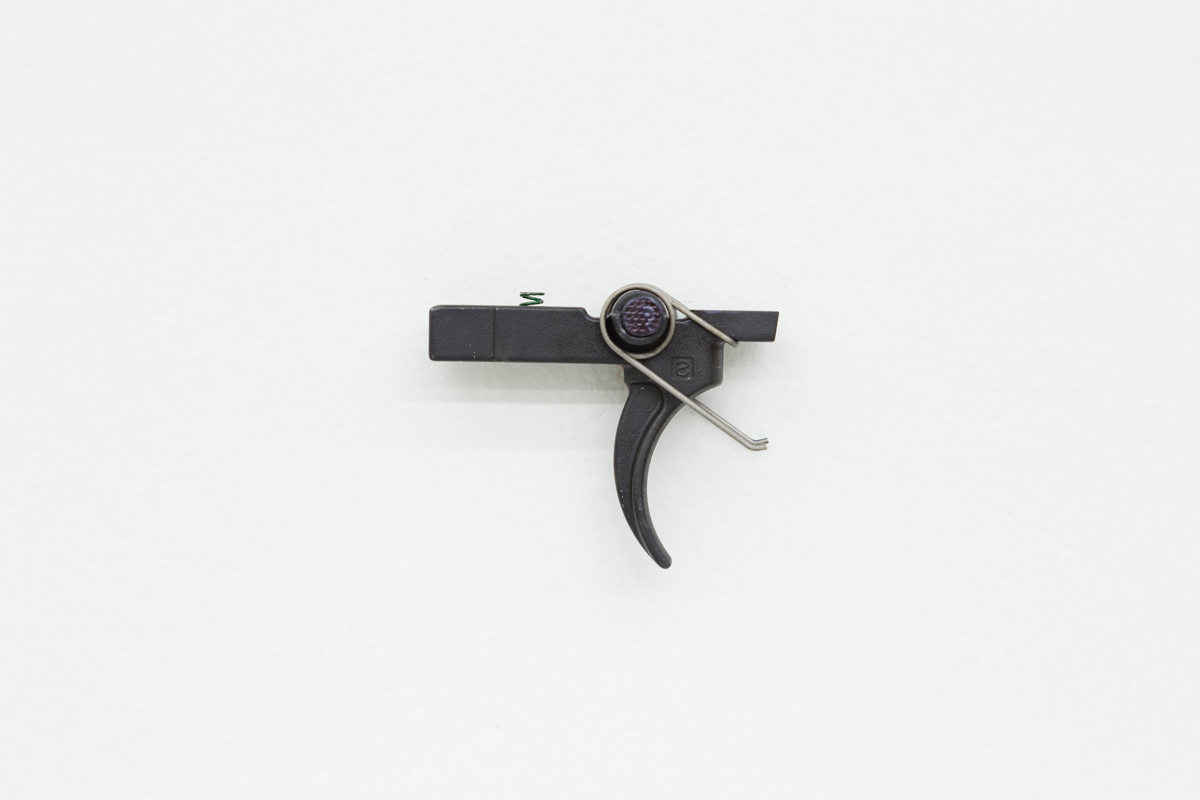
“Trigger (Sig Saver Mcx) (Permanently Disabled by Chip Flynn),” 2017.
ALBERT: What do you think about the art sphere? The people who attacked me for JT weren’t conservatives—they came from the edgy hipster crowd. It was as if I’d sold them a fake Louis Vuitton bag and they were mad at me. All JT was to them was a signifier they could walk around with.
OLIVO: I should say here that I’m complicit in the art sphere, but it’s also really not a good sphere for a lot of different reasons. A lot of it is access-based, which isn’t really possible for many people. It’s ableist, racist, classist—it’s all the things that happen out in the world. When I first entered the art sphere, the thing I hated was the term “associative credibility,” which basically means that who you know is important to how you are perceived and consumed.
ALBERT: Well, I hope we can keep talking and maybe collaborate sometime. I’ve got to send you a raccoon penis bone.
OLIVO: Oh, I love those. I used to see those in the South growing up.
ALBERT: It’s a pretty amazing thing for such a small animal.
OLIVO: Well, I like oddities.
ALBERT: I think we’re both chock-full of them!
———




